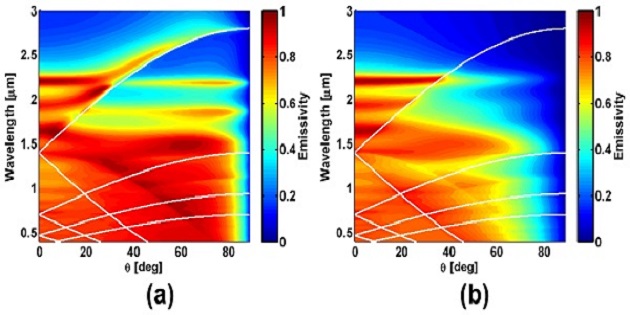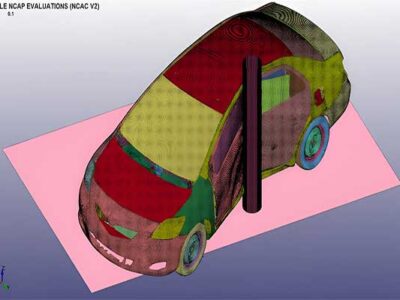Incorporating a specifically designed layer of silica glass unto the surface of solar cells creates ‘self-cooling solar cells’ with the ability to cool themselves by shepherding away unwanted thermal radiation.
This is the latest breakthrough in solar cell R&D by researchers led by Shanhui Fan, an electrical engineering professor at Stanford University in California.
This breakthrough may help overcome one of the major hurdles in developing high-efficiency, long-lasting solar cells.
Solar cells are well known to loose a substantial amount of percentage efficiency to overheating. Under normal operating conditions, solar cells can easily reach temperatures of 130 degrees Fahrenheit (55 degrees Celsius) or more.
These harsh conditions quickly sap efficiency and can markedly shorten the lifespan of a solar cell. Actively cooling solar cells, however—either by ventilation or coolants—would be prohibitively expensive and at odds with the need to optimize exposure to the Sun.
The newly proposed design avoids these problems by taking a more elegant, passive approach to cooling. By embedding tiny pyramid- and cone-shaped structures on an incredibly thin layer of silica glass, the researchers found a way of redirecting unwanted heat—in the form of infrared radiation—from the surface of solar cells, through the atmosphere, and back into space.
“Our new approach can lower the operating temperature of solar cells passively, improving energy conversion efficiency significantly and increasing the life expectancy of solar cells,” said Linxiao Zhu, a physicist at Stanford and lead author on the Optica paper. “These two benefits should enable the continued success and adoption of solar cell technology.”
In addition, solar cells “age” more rapidly when their temperatures increase, with the rate of aging doubling for every increase of 18 degrees Fahrenheit.
To passively cool the solar cells, allowing them to give off excess heat without spending energy doing so, requires exploiting the basic properties of light as well as a special infrared “window” through Earth’s atmosphere.
“Silica is transparent to visible light, but it is also possible to fine-tune how it bends and refracts light of very specific wavelengths,” said Fan, who is the corresponding author on the Optica paper. “A carefully designed layer of silica would not degrade the performance of the solar cell but it would enhance radiation at the predetermined thermal wavelengths to send the solar cell’s heat away more effectively.”
The researchers are currently fabricating devices and performing experimental tests on their design. Their next step is to demonstrate radiative cooling of solar cells in an outdoor environment. “We think that this work addresses an important technological problem in the operation and optimization of solar cells,” Linxiao Zhu concluded, “and thus has substantial commercialization potential.”
Publication Reference & Images:
Linxiao Zhu et al: Radiative cooling of solar cells. Optica, 2014 — Link

















Comments